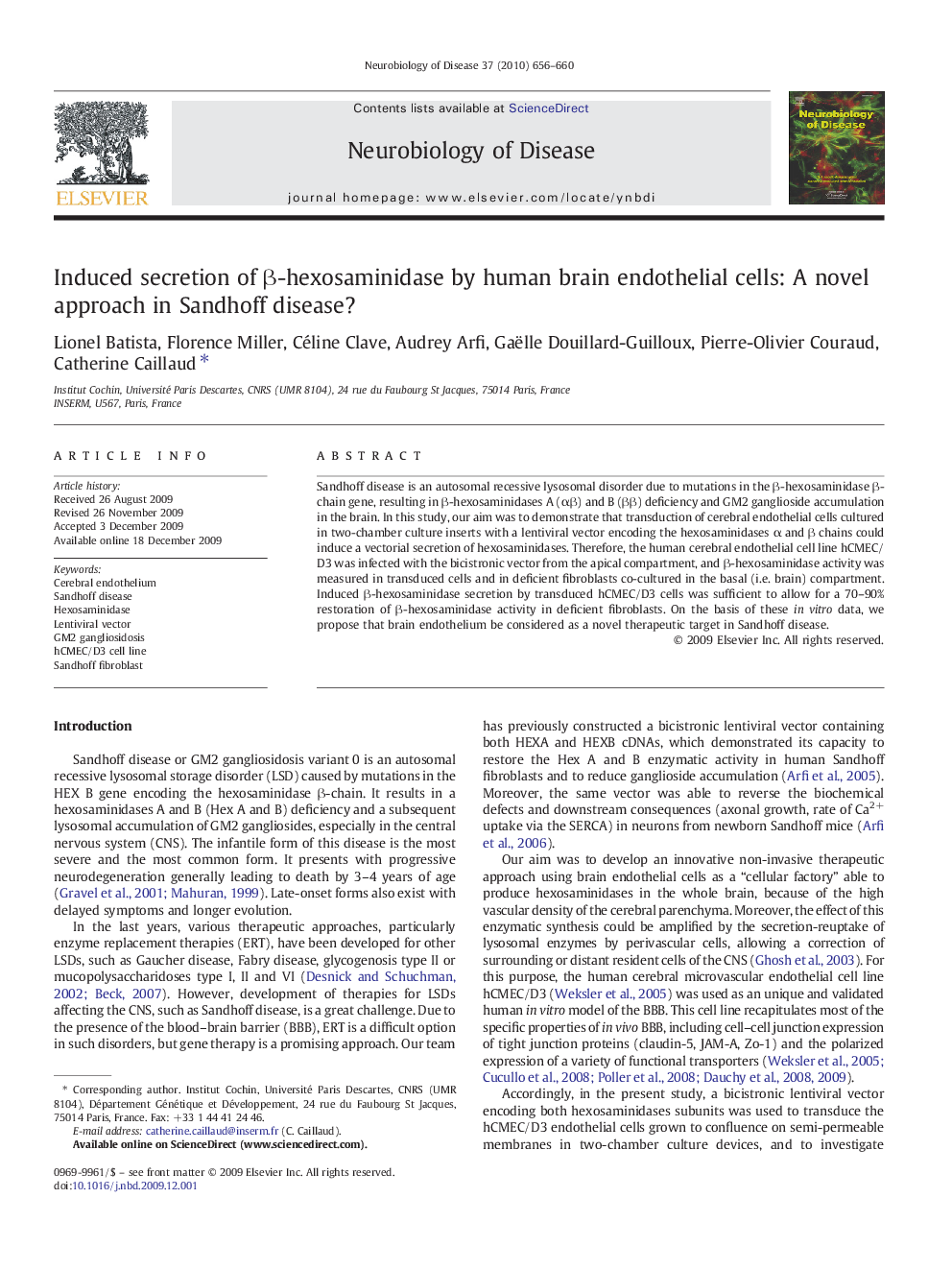| کد مقاله | کد نشریه | سال انتشار | مقاله انگلیسی | نسخه تمام متن |
|---|---|---|---|---|
| 3069929 | 1580709 | 2010 | 5 صفحه PDF | دانلود رایگان |

Sandhoff disease is an autosomal recessive lysosomal disorder due to mutations in the β-hexosaminidase β-chain gene, resulting in β-hexosaminidases A (αβ) and B (ββ) deficiency and GM2 ganglioside accumulation in the brain. In this study, our aim was to demonstrate that transduction of cerebral endothelial cells cultured in two-chamber culture inserts with a lentiviral vector encoding the hexosaminidases α and β chains could induce a vectorial secretion of hexosaminidases. Therefore, the human cerebral endothelial cell line hCMEC/D3 was infected with the bicistronic vector from the apical compartment, and β-hexosaminidase activity was measured in transduced cells and in deficient fibroblasts co-cultured in the basal (i.e. brain) compartment. Induced β-hexosaminidase secretion by transduced hCMEC/D3 cells was sufficient to allow for a 70–90% restoration of β-hexosaminidase activity in deficient fibroblasts. On the basis of these in vitro data, we propose that brain endothelium be considered as a novel therapeutic target in Sandhoff disease.
Journal: Neurobiology of Disease - Volume 37, Issue 3, March 2010, Pages 656–660